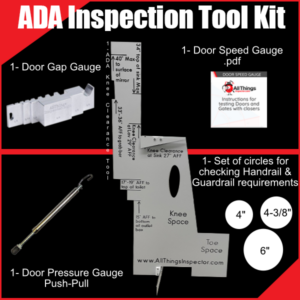

Fire emergencies in any business organization can be dangerous, but it poses an even greater danger for employees with disabilities. Normal emergency exits may not be designed to allow those with mobility, vision or hearing impairment to make a quick and safe escape easily. This is where ADA-compliant exits come into play. By ensuring that your workplace meets the accessibility standards set by the Americans with Disabilities Act (ADA), you can create a safer environment for all employees including those with disabilities.
People with disabilities often struggle with navigating exists that are not designed for their needs. ADA-compliant exits include wider doorways, ramps, and clear pathways that allow people using wheelchairs, crutches or other mobility aids to evacuate quickly. They also eliminate obstacles that could slow down or prevent swift evacuation.
For instance, someone in a wheelchair may be unable to access a standard exit with stairs. However, with an ADA-compliant exit that includes a ramp or an evacuation chair system, they can evacuate the premises safely. Also, automatic doors and push-button exit mechanisms enable people with limited hand mobility to open doors without any assistance.
Fire alarms are not enough if your employees can’t hear or see them. Most people with hearing impairments might not hear a normal fire alarm in time, putting them at serious risk. Meanwhile, ADA-compliant fire safety systems include visual alarms which provide clear warnings for those who are deaf or have difficulty hearing. Also, exits are supposed to have tactile warning strips to help those with vision impairments locate exit routes without relying on sight alone. In case of a fire outbreak, these small details make a huge difference in ensuring that employees with disabilities can evacuate safely.
In a fire emergency, confusion and panic can slow down the evacuation process. According to the ADA regulations, you should have clear and easy-to-read exits signs with proper lighting and contrast in your workplace. Also, employees with disabilities should be allowed to participate in regular fire drills. This allows them to get familiar with exit routes and procedures, ensuring that they know exactly what to do if a fire breaks out.
Beyond safety, having ADA-compliant exits is also a legal obligation. You must ensure your organization follows the ADA rules and guidelines regarding fire safety which requires that provisions are made for employees with disabilities to evacuate the premises safely. Failure to do so not only puts lives at risk but can also result in hefty fines and legal consequences.
Fire safety should be a priority for everyone. ADA compliance provides clear guidance, remove barriers and ensure that employees with disabilities have the same privilege to escape as everyone else. By prioritising accessibility in fire evacuation plans, you can create a safe working environment for your employees and also meet ADA requirements and legal standards.



Measuring door pressure is acting in compliance with building regulations, like the Americans with Disabilities Act (ADA). It’s an important step in ensuring accessibility, safety

When talking about building safety, the first things that come to mind are fire alarms, emergency exits and security systems. Meanwhile, the one tool that